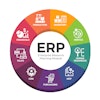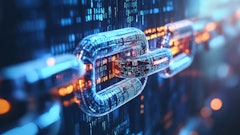
Obtaining financing is a critical part of any business. It helps stabilize cash flow and general operations, take advantage of new opportunities, upgrade assets and prepare for the future. However, using financing at the wrong time and for the wrong purpose can drag down a business, especially in the logistics industry. Logistics companies utilize large and expensive equipment. If the business—and financing of that business—is not managed well, any company could run into issues, from the individual owner-operator to the largest of organizations.
Here are some essential points to leverage financing smoothly and effectively.
Determine objectives
Before any financing decision, carefully map out the business objectives. Ask these questions:
1. What are the business goals?
2. What will additional funding be used for to achieve those objectives? Some answers might include obtaining new equipment, expanding operations, smoothing out seasonal business, and acquiring new business, among others.
3. What is the timeline for using the funds?
Examine resources
It’s important to determine the collateral a company has to leverage. Are there numerous accounts receivable invoices? What are the owned business assets, including equipment?
What challenges will be faced?
Realize that every project will not go smoothly, and the same can happen with business objectives. Review the areas where the company may have difficulties and challenges, such as delays, increases in costs or economic factors outside of its control, like the pandemic or rising inflation.
Reviewing these three areas – objectives, resources and challenges – before obtaining financing will help in working with a financing partner. That partner will help determine which financing option is best, maximize the value of financing and minimize problems down the road.
Accounts receivable financing (also known as factoring)
The first option to consider is accounts receivable (A/R) financing, also known as factoring. A/R financing leverages unpaid A/R invoices as collateral for a revolving line of credit. Companies receive payments worth most of the invoice value in a short period – as little as 24 hours. With A/R financing, the bank takes ownership of the receivables and the responsibility of collecting on them, so there’s less time and worry involved with payment deadlines and collections. Consider this option if an industry or customer has long repayment timelines. Leveraging A/R financing shortens the timeframe for receiving payments, and financing accesses money already owed. A/R financing is not an all-or-nothing endeavor either. Companies can select the invoices they want to use as collateral. Use A/R financing to smooth out cash flow, minimize working capital issues or fund a larger project.
Asset-based lending
Asset-based lending provides more flexibility than standard or limited business loans. Companies may be able to leverage various business assets to finance the company’s objectives. Available assets for collateral could include accounts receivable, inventory or equipment. Loans using tangible assets as collateral typically receive lower interest rates than unsecured loans, making the ROI on a loan easier to obtain.
Equipment financing
The logistics industry is unique in its need for high-value equipment that needs to be operational. Down times for trucks, for example, can severely impact business. Financing equipment helps stabilize costs and minimize infrequent large capital expenditures. Equipment financing does have a higher lifetime cost versus a purchase. However, spreading payments over months creates cost predictability so companies can use cash or assets for different business areas. With this long-term view, a company can use these assets to be proactive regarding their fleet or other logistics needs.
Looking for a financing partner
When obtaining financing, choose a partner that knows the unique nature of the food logistics industry and understands the company’s unique challenges. Create a customized solution that will match how the business operates. Look for a provider that is established and has been in the industry for some time with a solid track record providing loans for similar companies. Established banks or lending providers should be able to offer customized solutions and competitive rates, but those aren’t the only measures to consider. Look at funding timelines, personalized set-up, dependable support, customer service and reliability. The partner should scale up or down as needs change. They may even suggest changing loan types as the company’s situation changes.
Financing can help a company achieve its goals, whether obtaining new equipment, expanding operations, smoothing out seasonal business, acquiring new business or something else. Choosing the right partner can make the financing experience a boon to the business and not a drag weighing down future growth opportunities.



















